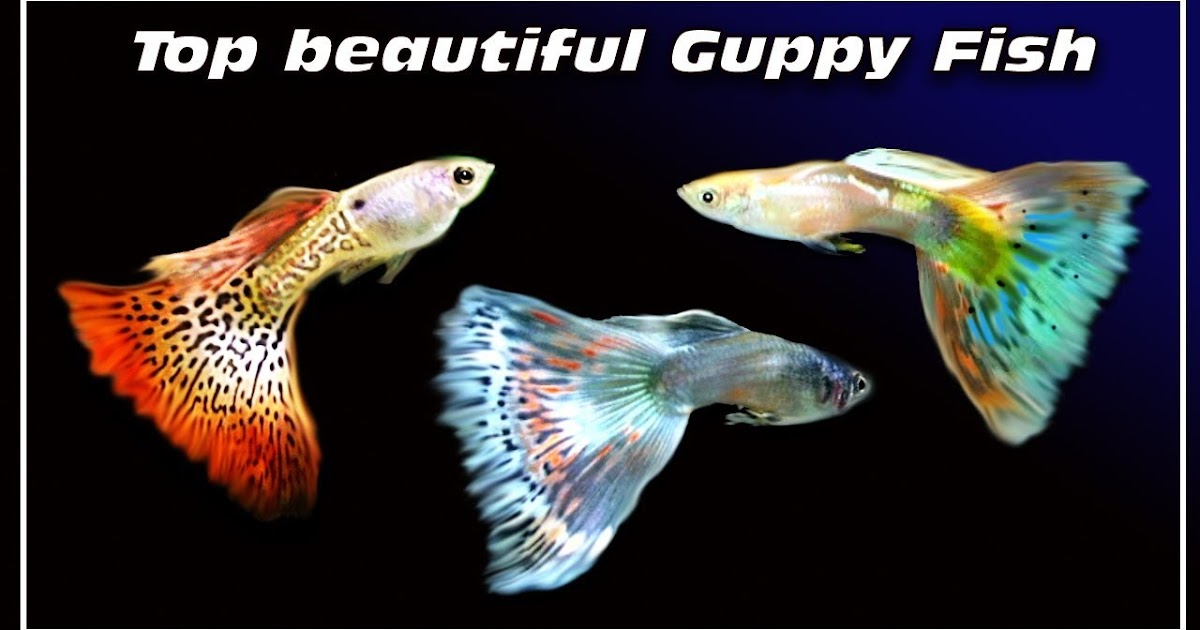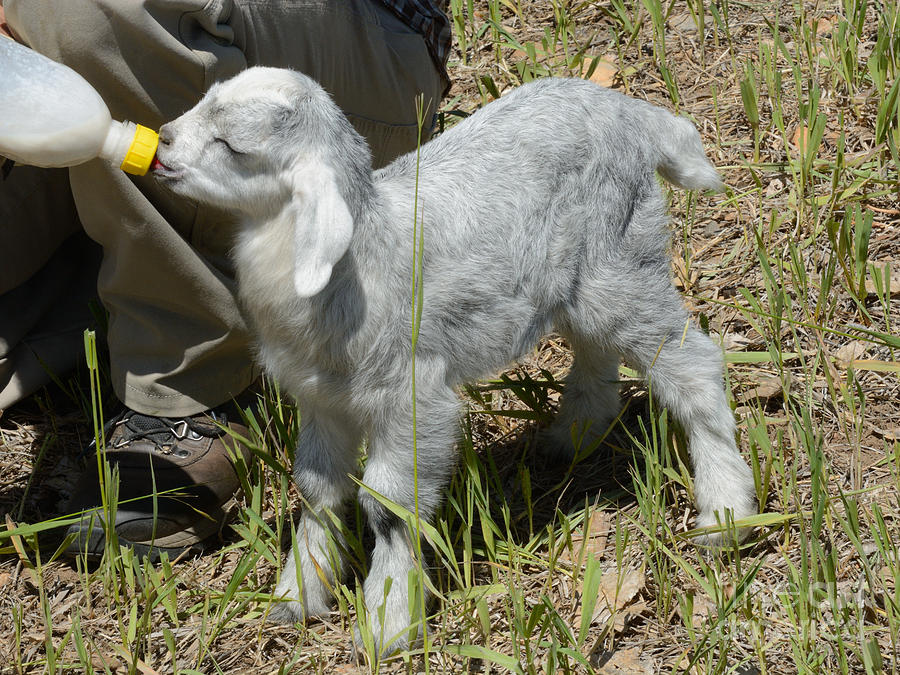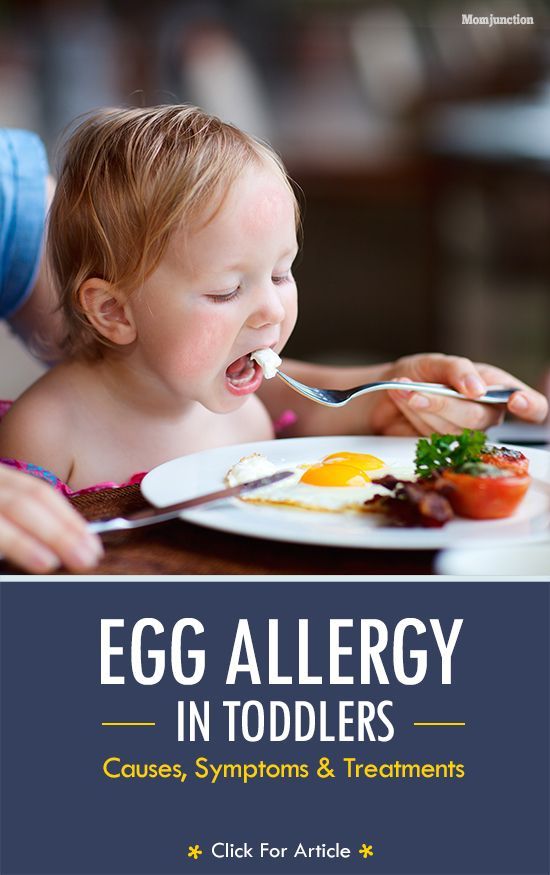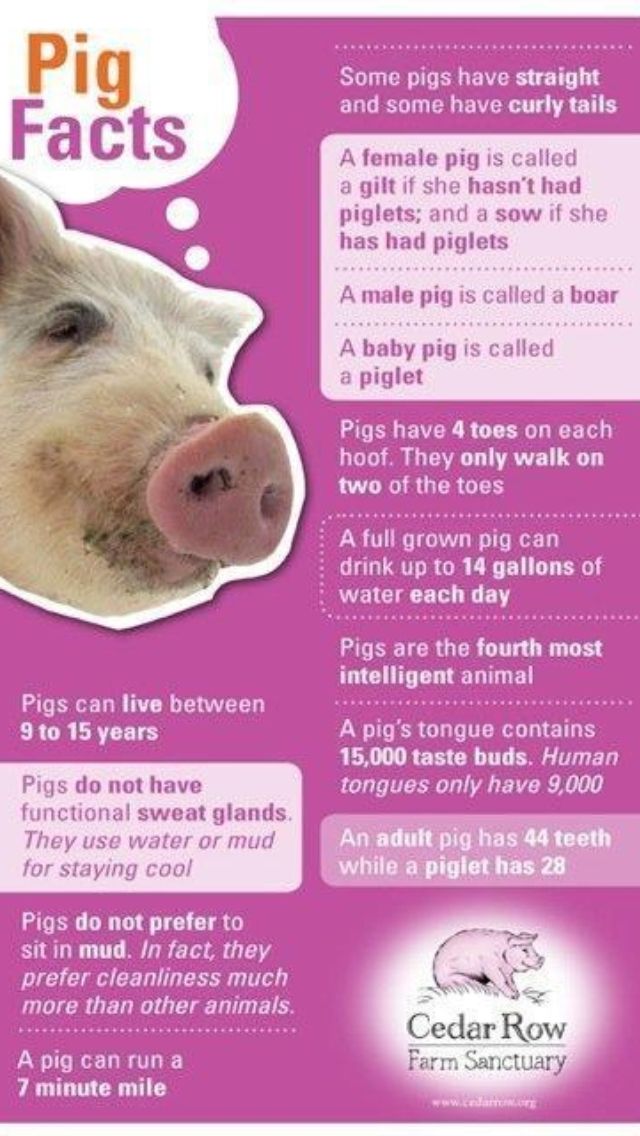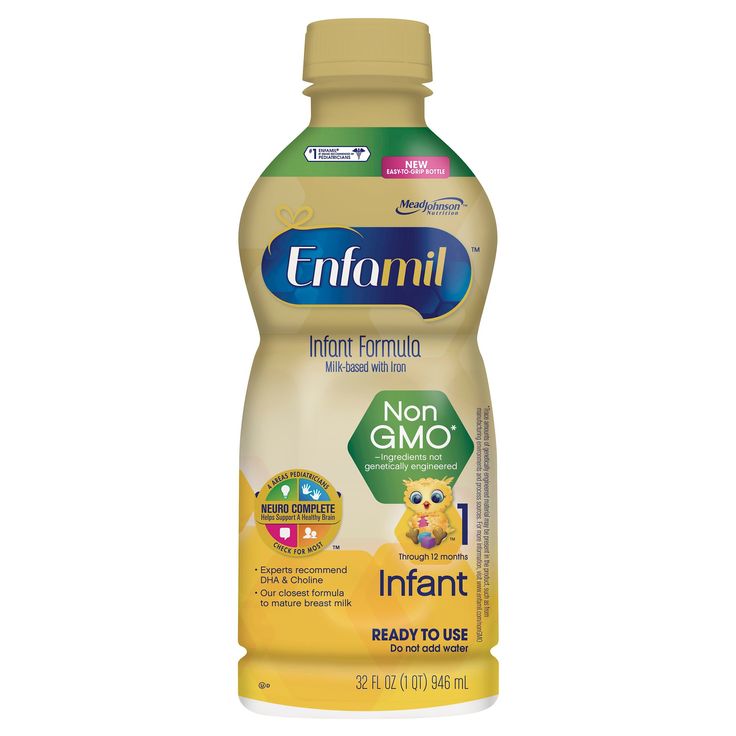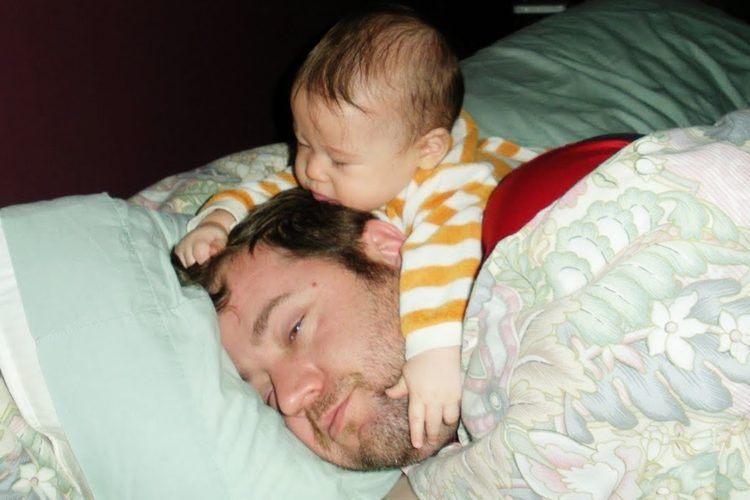What to feed baby guppy fish
How To Care For Baby Guppies (And Keep Them Alive)
Guppies are a phenomenal fish to keep for any fish owner. They are quite easy to take care of for beginners, are great tank mates to many other types of fish, and look absolutely beautiful in the tank, with their bright colors and beautiful bodies, often times stealing the show.
However, caring for baby guppies can be a different story. In fact, since guppy parents don’t really care for their babies themselves (and often end up eating their young), the responsibility falls on you. But how do you care for baby guppies? Saving them before they’re eaten, feeding them properly, protecting them, and giving them a safe environment are some great ways of caring for baby guppies.
Betta Fish Care Guide
Please enable JavaScript
Betta Fish Care Guide
But there’s a lot more to it than that. Read on to find out everything you need to know about how to care for baby guppies!
Contents
- 1 How Are Baby Guppies Born?
- 2 How Do You Keep Baby Guppies Alive?
- 3 How Do You Care for Baby Guppies?
- 4 Water Temperature
- 5 Light Conditions
- 6 Water Changes
- 7 Protecting Your Baby Guppies
- 8 Feeding Your Baby Guppies
- 9 How to Feed Baby Guppies
- 10 How Often Should You Feed Baby Guppies?
- 11 What Should You Feed Baby Guppies?
- 12 How Large Should Guppy Fry Food Be?
- 13 Is Variety Important in a Baby Guppy’s Diet?
- 14 Is Live Food or Flakes Better?
- 15 When Should You Feed Baby Guppies?
- 16 Check Out The E-Books!
- 17 FAQ
- 18 Recap
Baby guppies, contrary to most fish, are not born in eggs. In fact, baby guppies are born in a live birth. Guppies reach sexual maturity at around 4 months. After this, they tend to give birth around once every 30 days for a couple of years.
The guppies are born directly into the water after a multi-hour (sometimes multi-day) labor process. They will then immediately try to find a place in the aquarium to hide.
For the first few hours of this process, the guppies will be a bit deformed and unable to move effectively until they get their bearings and figure out how to swim. It is at this point that they are most vulnerable to their hungry parents.
The guppies will then immediately start searching for food and hiding until they grow large enough that the larger guppies won’t see them as a tasty lunch!
How Do You Keep Baby Guppies Alive?Although it might seem hard, keeping baby guppies alive is actually a rather simple process. There are a number of effective strategies that you can employ in order to make sure that your guppies stay alive so you can have a healthy, thriving tank.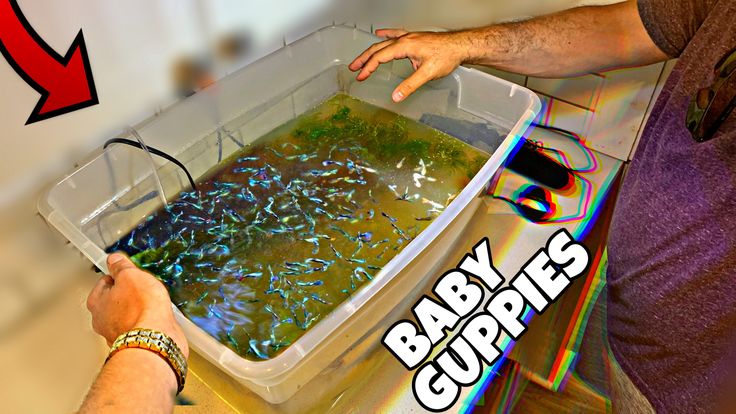 Read on to find out how to keep those baby guppies swimming
Read on to find out how to keep those baby guppies swimming
If your Guppy is swimming upside down, however, It can be a sign of something else. Find out what it means here!!
Get a Breeding TankThe first thing you can do to help keep your baby guppies alive is to get a breeding tank. A breeding tank is a fish tank, separate from the fish tank that your guppies are currently in, specifically for putting guppy fry (or other baby fish) into in order to keep them safe.
Put the pregnant female guppy into the breeding tank and watch it carefully. Upon the birth of the fry, remove the female from the breeding tank and place it back into the normal tank with the rest of the guppies.
This can be a bit difficult, as you need to make sure that the water is treated properly for fish in both tanks. However, a breeding tank is the best strategy for protecting your baby guppies, as it is a surefire way to make sure they are separated from the larger guppies so that they aren’t eaten.
It’s not always possible, however, to have an entirely separate tank just for breeding purposes. In these cases, there are still steps you can take to protect your guppy fry from the rest of the guppies in the tank.
Try separating the pregnant female from the other guppies in the tank. Use a glass jar or some other container and place the pregnant female inside. Make sure the water is at the correct temperature, pH, and hardness for your fish. This isn’t ideal, as a jar or container won’t have the filters, temperature control, and other helpful aspects that a tank has. However, this is a less expensive alternative.
Get a Breeding BoxIf you don’t want to separate the mother and you don’t have a separate breeding tank, you can try solutions that only require one tank. One such solution is called a breeding box. A breeding box is essentially a mesh or plastic box that goes inside of your current fish tank.
This will protect the female and the fry from other guppies while allowing you to not have to control the water conditions in more than one tank.
Get the pregnant female into the breeding box. After she gives birth, immediately remove her from the box, and allow the fry to stay there for a little while to grow. Afterward, either move them into their own container or allow them to hide and feed into the tank.
Provide Your Fry With Ample Hiding SpotsOne of the most important things you can do for your guppy fry is to provide them with ample hiding places in the tank. These include little rocks, caves, vegetation, and decorative pieces that they can swim between and around, allowing them to hide from the larger guppies in the tank until they are large enough to avoid being eaten on their own.
Guppy fry needs around two weeks to grow to this size. Planting things like guppy grass, water lettuce, or java moss will help them hide for a couple of weeks from larger guppies that don’t need to hide as often (especially if there are only guppies in your tank).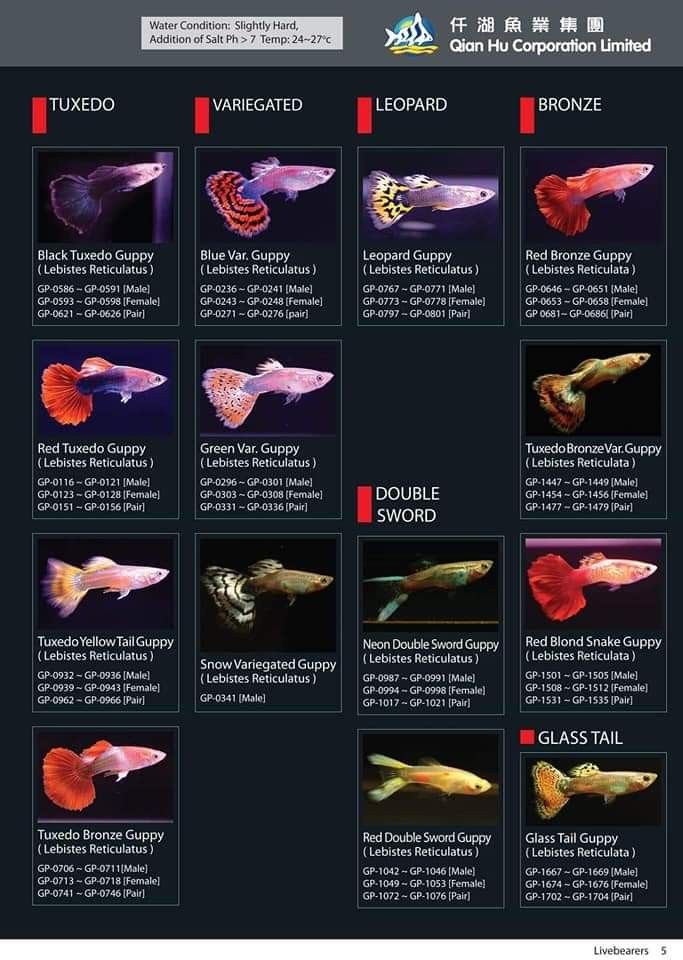
Baby guppies are fragile, so there is more to taking care of them than just protecting them from being eaten by adult fish. There are a number of techniques you can employ in order to make sure that your guppy fry grows into healthy, strong, beautiful guppies.
Caring for baby guppies includes making sure they are well-fed, protected from adult guppies, and that their living conditions are proper to allow them to grow well. Read on to find out more about caring for baby guppies!
Water TemperatureOne important aspect of caring for baby guppies is making sure their water conditions are good. A big part of this for fish is the temperature of the water they are swimming in. Many different kinds of fish prefer many different water temperatures, so it’s important to know what temperature your specific fish are best suited to.
For guppy fry specifically, you should keep their water at 80 degrees Fahrenheit. Guppies are freshwater fish, so make sure they aren’t swimming in saltwater either. The reason that they like to swim in such warm water is that it speeds up the metabolism of the guppy fry, allowing them to grow faster.
The reason that they like to swim in such warm water is that it speeds up the metabolism of the guppy fry, allowing them to grow faster.
Guppies can handle a wide variety of temperatures, so this isn’t entirely a necessity, but it will help your guppies grow, which is the most important part of caring for them, as it keeps them safe.
Light ConditionsGuppy fry also likes to be in the light for a significant portion of the day. Try to keep the lights on in and around your tank for at least 12-16 hours per day. There are lights on timers you can purchase, so you don’t have to manually track light hours and turn the lights on and off.
The reason guppy fry like to be in the light for so long is so that they can grow properly. Guppies that don’t receive enough light as fry often grow in deformed ways, as their spines may not grow properly. Make sure not to give them too much light, as fish need their rest as well. They don’t necessarily sleep, but too much light will cause them to remain overactive.
Again, 12-16 hours of light is enough. It doesn’t have to be very bright either. Mild light for most of the day is more than enough for your guppy fry to remain comfortable.
Water ChangesMake sure that you are keeping your water as fresh and clean as you possibly can. This means doing partial water changes quite regularly in order to ensure that your guppy fry is growing in the cleanest environment they can.
50% water changes around twice a week is a good amount to start with. However, this number can change based on the size of your tank and the amount of guppy fry that is in it.
The denser the population of guppy fry in the tank, the more often you should change your water. This means more often for more guppy fry or in a smaller tank, and less often for a larger tank or a tank with less guppy fry in it. This is because the more crowded your tank gets, the dirtier it will become from uneaten food particles, fish waste, and other debris.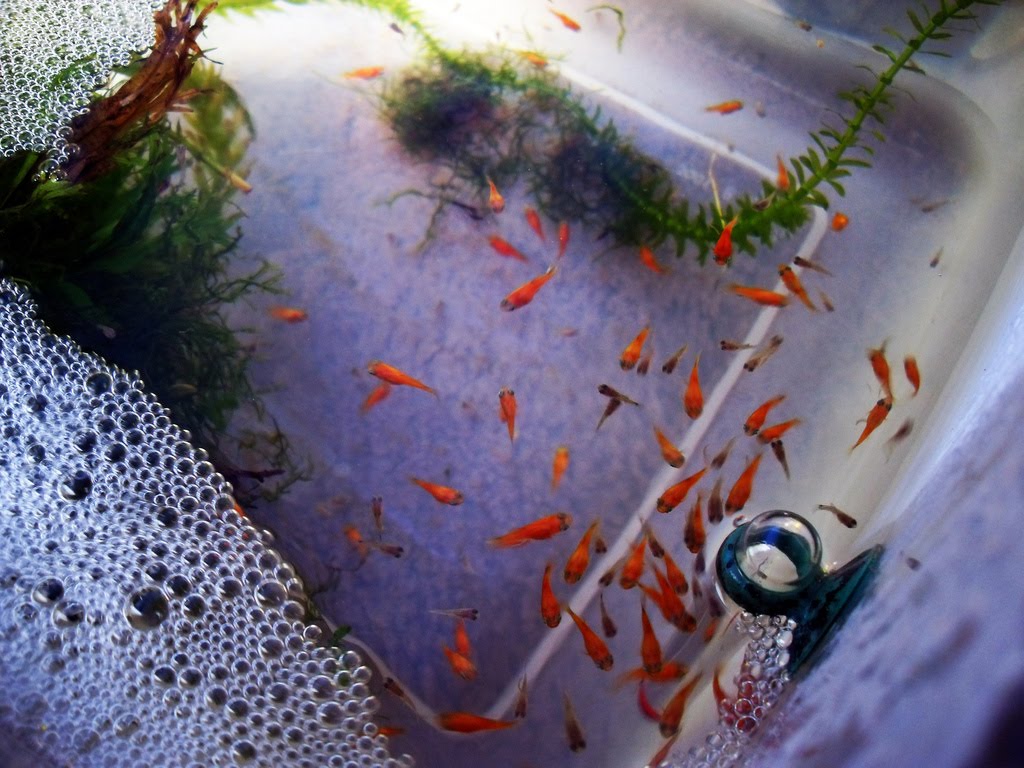
We’ve been over it already a bit, but it can’t be overstated how important it is to protect your guppy fry from the larger guppies in the tank. Larger guppies will eat guppy fry without a second thought, so if you’re breeding guppies, you obviously want to avoid this outcome.
Keeping them in a separate tank is best, but giving them plenty of cover and places to hide within the tank can be fine, too, depending on how many guppy fries you’re willing to lose. Giving plants for guppies to hide in significantly increases the survival rate of their babies.
Make sure that you give your guppies enough time to grow up before allowing them into the rest of the tank with the other guppies if you’re keeping them separate. Again, around two weeks is a good amount of time. They should be around full size by then, or at least large enough to not be mistaken for food.
Feeding Your Baby GuppiesMaking sure your baby guppies are eating a proper diet is the last way you can care for them. Since they are much smaller than regular guppies, they are going to have a different diet due to what they are physically able to consume.
Since they are much smaller than regular guppies, they are going to have a different diet due to what they are physically able to consume.
Guppy fries eat very often, as they have a quick digestion cycle. This is only helped by warm water if you are keeping them in a properly heated tank, which would be at about 80 degrees Fahrenheit. We will get more into feeding your guppy fry below.
How to Feed Baby GuppiesFeeding your guppy fry might seem simple, but it’s very important to get it right. Allowing your guppy fry to grow into healthy, beautiful guppies is the goal after all, and feeding them, just like any other animal, is among the most important parts of making sure that they get the nutrients to grow properly.
How Often Should You Feed Baby Guppies?Baby guppies love to eat and, as mentioned earlier, have an extremely quick digestion cycle. This means that they should be fed fairly often. The digestion cycle of the guppy fry is about 30 minutes, meaning that they are usually ready to eat again every half hour.
You don’t have to feed them this often, as you would basically be spending your whole day constantly feeding fish. However, it does mean you should be feeding your guppy fry a lot. Try to feed them between 5 and 10 times a day. The more you feed them, the faster they will grow.
If you are only keeping guppies for fun and not trying to breed and sell them, you don’t have to feed them as much. For fries that are being kept simply as pets, you can feed them once or twice a day, and they will be just fine. Do keep in mind, however, the more you feed them, the faster they’ll grow.
What Should You Feed Baby Guppies?Surprisingly enough, baby guppies can mostly eat whatever adult guppies can eat. The problem is the size of the food. Flake food for guppies from a pet store will suit just fine, but live food works as well. Live food includes things like baby brine shrimp, vinegar eels, daphnia, and micro worms.
Frozen dry food or flakes suitable for guppies are also just fine. Although, similarly to the amount you’d feed them, you may want to change your guppy frys’ diet according to what you plan on doing with them.
Although, similarly to the amount you’d feed them, you may want to change your guppy frys’ diet according to what you plan on doing with them.
report this ad
If you want to get some extra protein in your guppy frys’ diet, egg yolk is a great source that is easy for them to eat! It might be a bit unconventional, but it works perfectly well to help your guppy grow up healthy and strong.
How Large Should Guppy Fry Food Be?The mouth of the baby guppy is a mere 6mm wide. This means that they can’t eat food that is the same size as what the adults eat, even though they are eating the same foods. This means you’ll have to manually reduce the size of the food if it’s for guppy fry.
Crushing up dry food into smaller pieces, turning live food into a paste, or breaking up anything else you feed your guppy fry into smaller pieces will allow them to eat and digest it more effectively. This is very important so you can make sure your guppy fry are eating, as if they can’t fit the food in their mouths, they will starve.
Variety is essential in the diet of your guppy fry. This is because no one food has all the proper nutrients, vitamins, and minerals that will help your fry grow into healthy, strong guppies. Try to mix up the foods you’re giving to your guppies so that they are getting a variety of nutrients!
Is Live Food or Flakes Better?Live food is normally considered the better option for guppy fry. It will provide a larger variety of nutrients and provide protein in many cases, allowing your guppies to grow faster. This, in turn, will let them grow quickly so they can avoid being eaten or be sold as adults if that’s what you’re looking to do.
If you’re just looking to keep them as pets, the frozen dry food or flakes will work just fine. Live food will help them grow faster, but the flakes or dry food will keep them alive just the same.
When Should You Feed Baby Guppies?Since you have to feed them so often, don’t pay too much attention to when you’re feeding them. Just try to feed them in evenly spaced out increments, around 5-10 times in their 12-16 hour active window. This will make sure they aren’t overfed while also feeding them often enough that they can grow quickly.
Just try to feed them in evenly spaced out increments, around 5-10 times in their 12-16 hour active window. This will make sure they aren’t overfed while also feeding them often enough that they can grow quickly.
Q: What do Baby Guppies eat?
A: As stated above, baby guppies can eat frozen dry food, flakes, or live food like micro worms, daphnia, and baby brine shrimp. Just makes sure it’s small enough for them to eat!
Q: How to Make a Baby Guppy grow faster?
A: Feed your baby guppies live food very often (closer to 10 times a day, or even more) if you want them to grow faster. Also, please keep them in warm water (80 degrees Fahrenheit) to boost their metabolism.
RecapBaby guppies are in danger as soon as their born, so it’s important to keep them safe. Keep them separated from the adult guppies, or at least give them hiding spots in the tank to avoid being eaten.
Feed them often, keep them in warm water, and give them live food to allow them to grow quickly.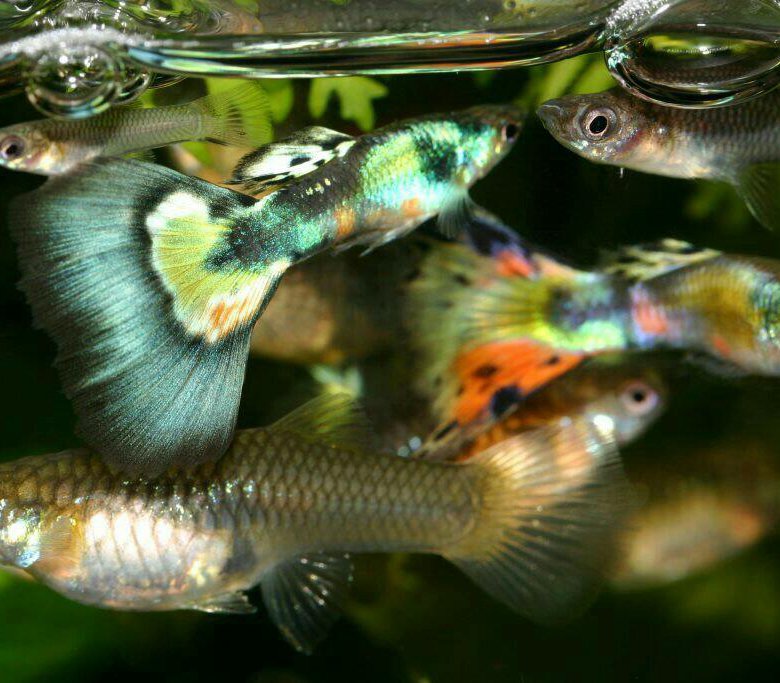 This will help keep them protected from being eaten by adults.
This will help keep them protected from being eaten by adults.
Make sure their water and tank conditions are proper. Lots of light (although not too bright), lots of vegetation, and warm water are great conditions for guppy fry. Soon enough, those babies will become fully grown, healthy, and beautiful guppies!
If you liked this article, make sure you check out the rest of the website! And if you have any more questions you can ask them in the Q&A Section!
Guppy Fry Care - How to Care for Baby Guppies?
Disclosure: When you purchase something through my affiliate links, I earn a small commission. As an Amazon Associate we earn from qualifying purchases. read more
Guppies are a fun fish to keep and breed. They reproduce very easy, however they do not take care of their fry. Baby guppies are left by their parents, often they are even eaten by the adults.
You can take care of guppy fry very easy, if you know that to do. In this article I will guide you through the process of raising your guppy fry.
How Guppies Are Born?
Guppies become sexually mature at around 4-6 months. Guppies do not lay eggs. Guppies are livebearers, which means, they give birth to live fry. The female guppy gives birth to 20-60 fry at a time. They usually give birth once every 30 days, until they become 2-2.5 years old.
Usually, the female guppy will hide, when she is ready to drop the fry. The guppy mom can be in labor for couple of hours (sometimes couple of days), before fry are born.
The guppy fry starts swimming right away, and will try to find a hiding place in the aquarium. At the beginning the fry is inactive and deformed. Few hours after birth they are already lurking around and searching for food.
How to Save Your Guppy Fry?
Often, baby guppies are getting eaten by their parents and other aquarium fish. If you don’t have a separate breeding tank, where you put your pregnant female to drop the fry, chances is that your guppy fry will not survive.
Not everyone has separate aquariums for breeding fish. That is fine, because you can still save your fry. Here is couple of methods that you can use to save your guppy fry:
That is fine, because you can still save your fry. Here is couple of methods that you can use to save your guppy fry:
- If you don’t have a separate tank, you can use a bigger glass jar or plastic container to separate the pregnant female from the rest of the adults. Extract the female from your main tank, only when she started giving birth.
- If you don’t have the possibility to keep the female separated, you can purchase a breeding box. A breeding box is a small mesh or plastic container, which you can insert into your fish tank. The good thing about this method is that you don’t have to worry about the water quality of the container. The breeding box is designed in a fashion that the water will flow through, but the fry will stay in the box. After the female finished giving birth, you will extract her from the box and only fry will remain.
- You can also save your fry by providing them with hiding places. Live plants such as guppy grass, hornworts, java moss, or the roots of water lettuce can increase the survival rate of guppy babies a lot.
 The plants will give them cover for one-two weeks, until they will be big and strong enough to get away from the adults.
The plants will give them cover for one-two weeks, until they will be big and strong enough to get away from the adults.
Feeding Guppy Fry
A newborn guppy fry is around 6 mm and its mouth is very tiny too. Although they are very small in size, their appetite is huge. Their digestion cycle is about 20-30 minutes. This means, they are ready to eat every 30 minutes. It does not mean that you have to feed them so often, but to encourage their growing speed you should feed them 5-10 times a day.
If you are running a guppy breeding operation and you are doing it for profit, you might want to keep this feeding schedule. However if you are keeping guppies for fun, feeding the fry once a day is enough.
Guppy fry will accept any food that their adult parents will eat. When you feed them, make sure you crush up the food, so it can fit in their mouth.
Feeding live food to your fish fry is the best: baby brine shrimp, micro worms, daphnia, or vinegar eels. However if you don’t have access to these type of food, you can use frozen or dry food as well.
You can feed them flake foods, but make sure you crush it up in tiny pieces. You can also feed them special powder food that is high in protein. I use First Bites to feed my guppy fry.
Egg yolk is another great source of protein for fry. Use the yolk of a hardboiled egg and make it into a paste. Add small amounts to your fry twice a day.
Feed your fish a variety of food to provide them with the necessary minerals and vitamins.
I was able to grow guppy fry to sellable size in just 3 months, with my secret homemade fish food recipe, that you can find in the linked guide.
Guppy Fry Tank Maintenance
If you are keeping your fry together with the adults, in the community tank, you don’t need to worry about your water parameters. As long the adults are happy, the fry will also thrive.
However, if you are keeping the fry in a separate thank, there are few tricks you can apply to your aquarium to speed up the growing speed of the guppy fry:
- Keep the water temperature at 80 °F.
 It is not necessary, but warm water speeds up the metabolism of the fish. This encourages the fry to eat more and grow faster.
It is not necessary, but warm water speeds up the metabolism of the fish. This encourages the fry to eat more and grow faster. - Make partial water changes often. Fresh water will also benefit the growth of the fry. Depending on the number of fish and the size of the tank, you might want to do 50% water changes twice a week. There are guppy breeders, who change 50%-100% of the water every day.
- Keep the lights on for at least 12-16 hours a day. Strong and bright light is not necessary, but helps in avoiding deformities in their spine. You don’t want to keep the lights on all day long, because fish also need to rest. Make sure you give them 6-8 hours of darkness, so they can “sleep”.
Conclusion
The first few months of a guppy’s life plays significant role. Good water conditions and a high variety of quality food will help you raise healthy and beautiful guppies.
Breeding guppies and raising fry as a hobby is fun. Doing it for profit is a whole other story. I will write about this in another article.
I will write about this in another article.
Resources:
Featured Image: https://www.flickr.com/photos/legomaster/5558978588/
Updated: May 20, 2019
How and what to feed guppy fry
Guppies are unpretentious small-sized aquarium fish, the simple maintenance of which explains the popularity of the species with both beginners and experienced breeders. An important feature is that they are viviparous - fry are formed in the mother's abdomen and are born already capable of independent life. One individual can produce from 10 to 100 babies at a time, depending on its age, but then the question arises of feeding offspring. We offer you to figure out how and what to feed guppy fry correctly and what nuances you should pay attention to. nine0003
Feeding features
Before the offspring appear, the female is placed in a separate aquarium so that the young that appear do not become food for other adults. The fry are kept and fed separately until they become competitive for life in a community aquarium. The nutrition of small fish differs from the diet of adults and has the following features:
-
frequency - for babies, 5-6 meals are required during the day, all food should be eaten in one feeding. The sedimentation of food residues at the bottom of the aquarium creates a dangerous increase in nitrogen content for guppies, which can lead to the death of offspring; nine0003
-
food sizes - unlike food for adult fish, food for small guppies should be much smaller. Dry food before serving in the aquarium is crushed between the fingers to a state of dust;
-
lighting - it is forbidden to turn off the light in the aquarium, especially the first week;
-
the amount of food served. From birth, for the first two weeks, guppy fry should receive a plentiful amount of food, which would exceed their weight by an average of 60%. In the period up to two months, the ratio of portion sizes to weight is twice the excess.
Only after two months of age, grown-up fish begin to be fed moderately - first offering food in the amount of a third of their weight, and in the future - 15%. nine0003
Three months after the separate keeping, the young can be returned to the general aquarium - they are already old enough and large fish will not be able to harm them.
Nutrition in the early days
Almost immediately after birth, the fry begin to look for food. The most important feeding period for the breeder is the first 3-5 days, when the kids should get plentiful, good nutrition with the lights on all the time. On the first day and all week, you can offer the fish the so-called "live dust" - live food of small size. Such food includes ciliates, rotifers, microworms on oatmeal from carrot juice, brine shrimp nauplii, etc. nine0003
In the first 5 days, food should be provided up to 5 times a day, at any time the kids should find high-quality food - this will allow them to fully develop.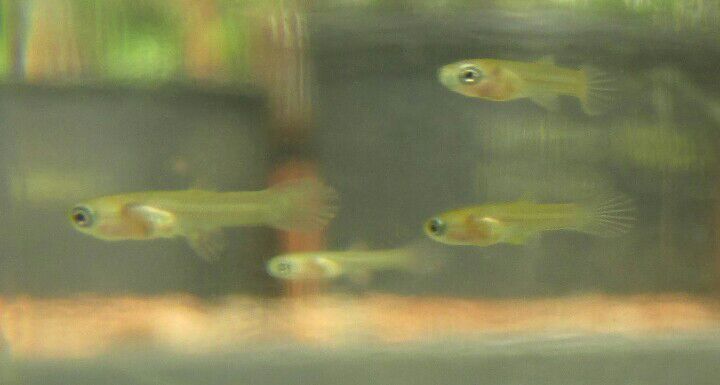
Natural food for fry over a week old
Preference for natural food is given by many experienced aquarists who are professionally engaged in breeding fish. From the second week, feeding is reduced to 4 times a day, supplementing the early diet with complementary foods in the form of crumbled bloodworms, nematodes, tubules (no more than 2 times a week). You can breed a microworm, which young guppies eat well and assimilate, on your own according to this scheme: nine0003
- prepare the nutrient medium - mix cornmeal with a little water until a creamy consistency is obtained, add a little yeast to the mass;
- microworm or take it from another owner of the aquarium, or find it on the street in a humid environment of fallen leaves, and put it into the corn mass;
- after a few days, the microworm will multiply enough to feed aquarium pets.
Guppy fry older than a week are given: nine0003
- hard-boiled egg yolk. It must be kneaded with a fork, slightly diluted with water from the aquarium and placed in a piece of gauze.
 The resulting bag is lowered into a container with guppy fry and shaken so that egg dust comes out - the young growth will eat it;
The resulting bag is lowered into a container with guppy fry and shaken so that egg dust comes out - the young growth will eat it; - at home, you can feed the offspring with an omelet. In the process of cooking, a teaspoon of dried and chopped nettle or hercules is added to the egg. Pour 50 ml of boiling milk into the mass with constant beating - in the process the egg will curdle, and the finished small omelet can be offered to the fry; nine0012
- milk powder. A container of milk is placed in a water bath and boiled until completely evaporated. The resulting powder is collected and offered as a top dressing for small fish;
- curdled milk. To coagulate the milk protein, the product is poured with boiling water, and the resulting clot is washed from the resulting whey. Feeding is done from the net, shaking it to release small particles;
- cheese. Hard or processed cheese without additives with a neutral taste is rubbed on a fine grater and dried a little.
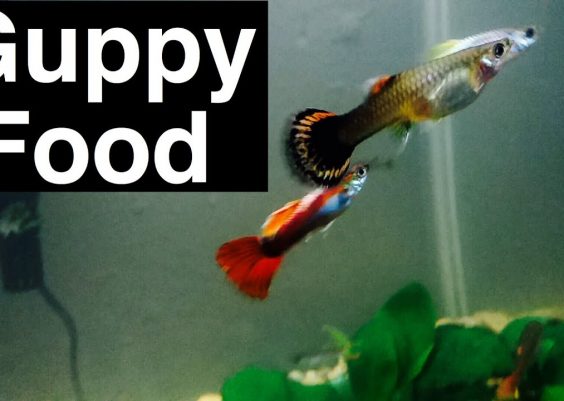 Such top dressing is given only in small quantities, since its excess can adversely affect water quality. nine0012
Such top dressing is given only in small quantities, since its excess can adversely affect water quality. nine0012
The described substitutes cannot be a complete food for fish, they can be introduced into the food system, but with the obligatory alternation with other feeds. It is important to add a small amount of algae, phytoplankton and other plant-derived components to the diet. From a month, the nutrition of fry is enriched with crushed bloodworms, tubifex, cyclops, daphnia.
Purchased feed
It is widely believed that feeding guppies with dry food is possible only when they reach the age of one month, and the maximum frequency of such feeding in the first four weeks cannot exceed once a week. However, many prefer to feed aquarium fish fry on the basis of a special balanced food, to which nothing needs to be added. There are offers from MicroMin, Micropan Sera, etc., designed specifically for rearing offspring. nine0003
Popular is the starter feed from the German company Tetra.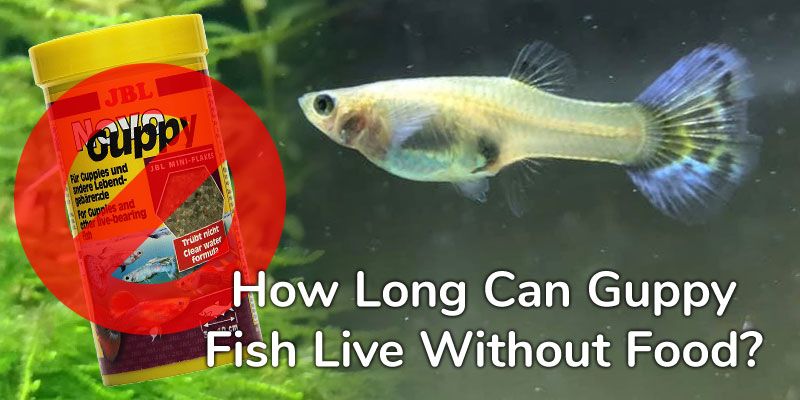 It is available in the form of a dense paste, which includes the following components:
It is available in the form of a dense paste, which includes the following components:
- beef and fish liver;
- brine shrimp;
- egg yolk;
- mosquito larvae;
- floured sprouted wheat, etc.
“Start” feeding is performed as follows: the neck of an open tube is lowered into the water, a portion of food is removed from it by light pressing, which gradually dissolves in the aquarium water and becomes suitable and convenient for fry to eat. nine0003
A big plus of purchased formulations is their balance, which is quite difficult to achieve when using natural food. So, vitamins A, T, carotene, calcium fluoride and other important components necessary for growth and development are added to the feed.
Proper feeding of guppy fry from the first days is the key to obtaining beautiful and healthy adults. Regardless of the chosen scheme - feeding with commercial feeds or live and homemade food - it is important to follow the basic rules regarding the frequency of feeding and its quantity. Any food for fry should be varied in composition, balanced and fresh, otherwise you can completely lose offspring. nine0003
Any food for fry should be varied in composition, balanced and fresh, otherwise you can completely lose offspring. nine0003
What to feed aquarium catfish: nutritional features and types of food
How and what to feed the tench in the aquarium and in the pond
What is the best food for koi
How to feed guppy fry and feeding features from the first minutes of life
Contents
- 1 Guppy nutrition features
- 2 What to feed guppy fry at first?
- 3 How to prepare live food substitutes?
- 4 More to know about feeding
Guppies are aquarium fish, quite unpretentious. Precisely because it is not difficult to keep them, breeders, starting with beginners, breed them in their home "reservoirs". What else is attractive guppies? They have unusually beautiful bright colors, they are mobile, so the presence of these fish will decorate any aquarium.
Guppies - viviparous fish : formed already in the tummy of the mother guppy. They are born almost fully formed and capable of independent living. Small guppies are called fry. After birth, they are placed in a separate aquarium. nine0003
They are born almost fully formed and capable of independent living. Small guppies are called fry. After birth, they are placed in a separate aquarium. nine0003
It is after birth that aquarists have an important question : how to feed guppy fry.
Feeding characteristics of guppy
Small guppies need to be fed differently than adults. If the big ones are fed twice a day, then the kids are fed 5 to 6 times. Feed at one time give so much to eat immediately. Otherwise, it will settle to the bottom and create life-threatening conditions for the fry in the aquarium: a lot of nitrogen is formed in the water , which will lead to the death of the guppy offspring. In addition, water changes should be daily. It should be taken only from the aquarium where dad and mom swim. nine0003
It is not necessary to say that feeding is an extremely difficult issue, since fry are ready to eat food that is also fed to adults. The only question is the size of this food: it should be much smaller, since the mouths of guppy fry are very small. If fed with dry food, then it must be kneaded between the fingers so that it turns into dust
If fed with dry food, then it must be kneaded between the fingers so that it turns into dust
You can choose another option: purchase a special food (Tetra MicroMin or Sera Micropan) intended for rearing fry. Both foods are balanced, so you don't have to add anything: your fry will receive a complete nutrition in accordance with their age. nine0003
There is also a substitute MicroMin that has all the vitamins that guppies need in their first days of life.
In order for the fry to grow up full-fledged, they need to be fed carefully. You need to be especially attentive to them in the first week. In addition, the light must not be turned off even for a minute, otherwise the fry may die.
How to feed guppy fry at first?
How you feed your pets in the first five days will depend on their full growth and development. Don't forget to feed them on time. Fish must find food at any time. nine0002 Live food is better :
- This can be live dust (a “shoe ciliate” will do, but you can feed it for three or five days).

- microworms that you have grown yourself on chopped carrots or purchased from a pet store,
- nauplii, cortemia, rotifers (grind!).
- Dry food is also suitable, but should only be used once a week for fry.
For the first seven days, food is given 4 to 5 times daily. In the second week, four meals a day will be enough. From now on, you can add crushed bloodworm, tubifex, nematode, but this complementary food can be given only once a week. nine0003
For busy aquarists, we recommend purchasing an automatic feeder. But this does not relieve from the obligation to monitor the cleanliness of the aquarium.
Fry eat well and substitutes for live food , which you can cook yourself at home: chicken yolk, scrambled eggs, curdled milk and other food.
How to prepare live food substitutes?
- Yogurt . Fill this product with boiling water. The casein will curdle. The resulting clot is caught with a net with small cells.
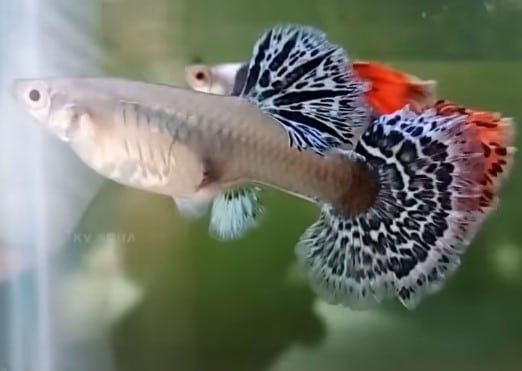 The contents are thoroughly washed from the whey. You need to feed small guppies from a net. When shaken, a cloud forms on the surface with the smallest particles of food. The water in the aquarium does not deteriorate. Food is stored in the refrigerator. nine0012
The contents are thoroughly washed from the whey. You need to feed small guppies from a net. When shaken, a cloud forms on the surface with the smallest particles of food. The water in the aquarium does not deteriorate. Food is stored in the refrigerator. nine0012 - Hard boiled chicken egg . The yolk is taken out and rubbed in a spoon. Water must be taken from the aquarium. Instead of a spoon, you can use gauze. The wrapped yolk is splashed in water. The fry eat the resulting egg dust. It should be noted that the water from such complementary foods deteriorates quickly, it will have to be changed more often.
- Small guppies can also be fed with scrambled eggs . For this, a couple of eggs are used, to which 2 teaspoons of nettle are added. It is dried and rubbed thoroughly. You can add hercules. Fall asleep in a hundred milliliters of boiling milk. The resulting mass is whipped. After cooling, you can offer fry. Leftovers can be stored in the refrigerator.
 Storage time is limited. nine0012
Storage time is limited. nine0012 - Aquarium fry can be fed with powdered milk . It contains a lot of useful protein. Regular milk should be evaporated in a water bath. The resulting powder is insoluble in water. Therefore, in a few hours, the fish eat it without a trace.
- Guppies love cheese . Choose not spicy. It should not be rubbed with a grater with the smallest cells. If the cheese is processed, then it must be dried. You don't need to add much, just one time. Excess can be detrimental to water quality. nine0012
It is advisable not to feed fry with dry food during the first month. The thing is, you can't fill it properly. Excess food "rots", forming a film on the water area of the aquarium. She doesn't let air through. In addition, small guppies cannot swallow such rough food.
What else you need to know about feeding
The question, what to feed the guppy fry , is also important in the future.
